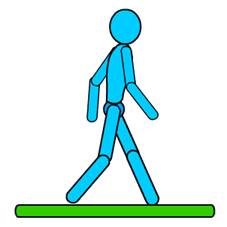Walk the talk by providing “walkability” data and tools to Millennials

Marketing experts will tell you that certain words have incredible power. The word “free” or “guaranteed” for example. When marketing to Millennials, real estate brokers and agents would be smart to pay attention to the word “walkability.”
It would also be smart to have real estate data to point out the “walkability” of the properties they are selling.
Because here’s the reality. Every generation is different. Some generations loved cars. A car was not always within reach of Americans. Certainly not as many as we have now where mom, dad, son and daughter each own an automobile.
The Millennials generation, born between 1980 and 2000, is the next group coming into money and power after Gen X.
But they could care less about having a fancy car or watching slick car commercials. They’re sick of cars and driving. They’ve seen their parents slog it out in traffic driving from the suburbs to the cities for work and to the malls for just about everything else.
They don’t want to drive. They want to walk. Or bicycle.
According to an extensive poll of 3,000 Millennials conducted by American Strategies and Meyers Research for the National Association of Realtors, here are some important statistics:
– 79% of Millennials want to live in a home that is within easy walking distance of community amenities.
– 85% want to live in a community with sidewalks.
– 48% said they would be okay with smaller yards as long as they could walk to stores, restaurants and other amenities.
– 25% said they would prefer living in an attached home if the walkability of the area was better.
Small yards. Attached homes. Bike lanes. The whole concept of mom and dad’s big suburban home with the huge yard is going right out the window.
So, what can real estate professionals do to promote the “walkability” of a property?
Well, you can tell people how great a particular property is in regards to walking and biking, or you can provide a wealth of data to show them. Which do you think is more convincing?
Especially to the generation that was raised on data and are better at accessing information with their fingers than any other generation in history.
What a broker or agent needs is solid hyper-local data. After all, they not only sell homes, they sell neighborhoods and communities as well.
Companies such as Home Junction specialize in providing customized, hyper-local community data for individual brokers and agents.
Sure, an agent can provide access to MLS listings on their website. But as we can see, that is no longer enough.
With Home Junction, for example, you can show all the local schools in the area. The distance each school is located from a particular property.
You can also show local businesses – restaurants or golf courses.
Brokers and agents have another option that goes one step further. With Home Junction’s SpatialMatch application, they can also provide a map that can be embedded on their real estate website. Not only does the map show MLS listings and where they are located, but it also shows the location of businesses surrounding any property and the distances.
So, if Yvonne is into yoga, here’s the walking or biking distance to the nearest yoga studio from this particular property.
If Gregory is into sushi, here’s the walking or biking distance to the nearest sushi restaurant.
With this type of data on your site, please excuse the pun, you can walk the talk.
And “walkability” is what Millennials want to hear. So provide that data for them and they will step right into a contract to purchase a home.
(Or conversely, show a seller how you are adapting to this new market trend with a website filled with “walkability” tools and data that appeals to Millennials.).
Read the NAR study on Millennials and walkability here.

